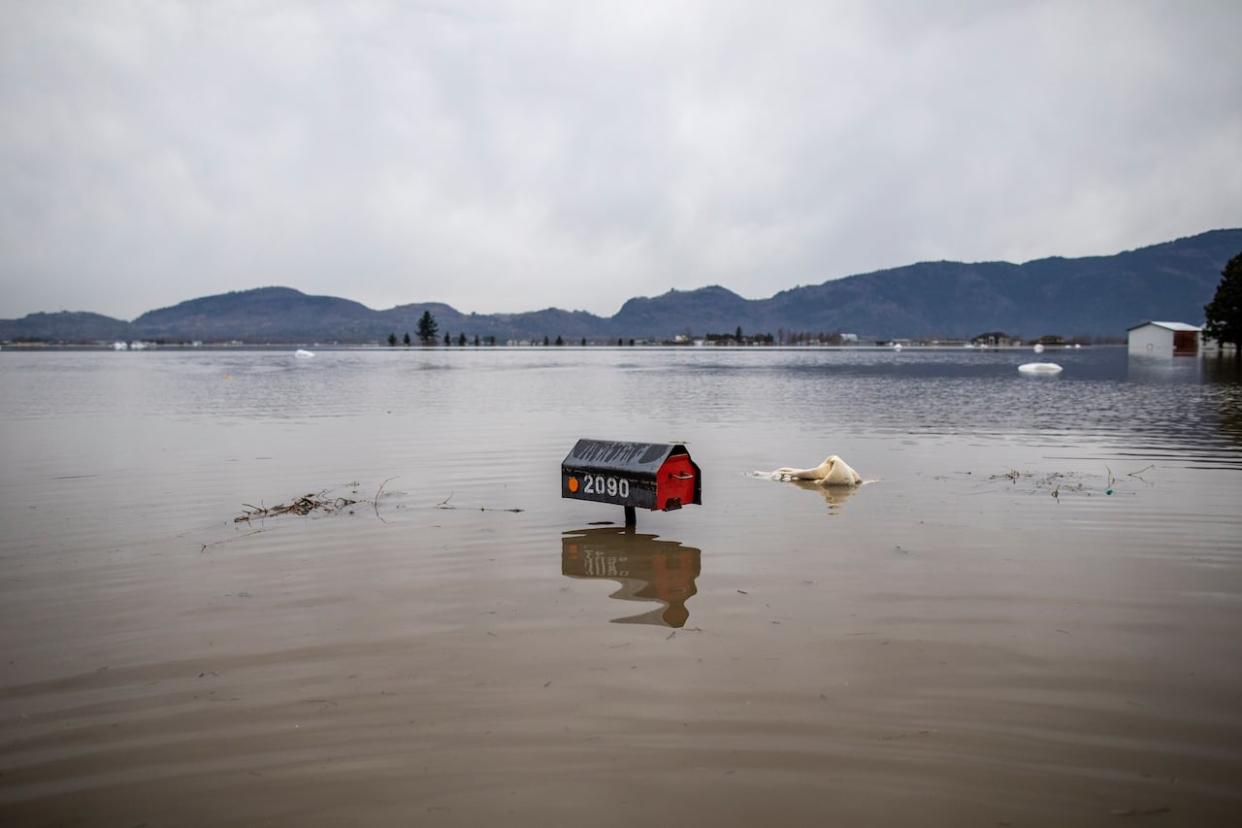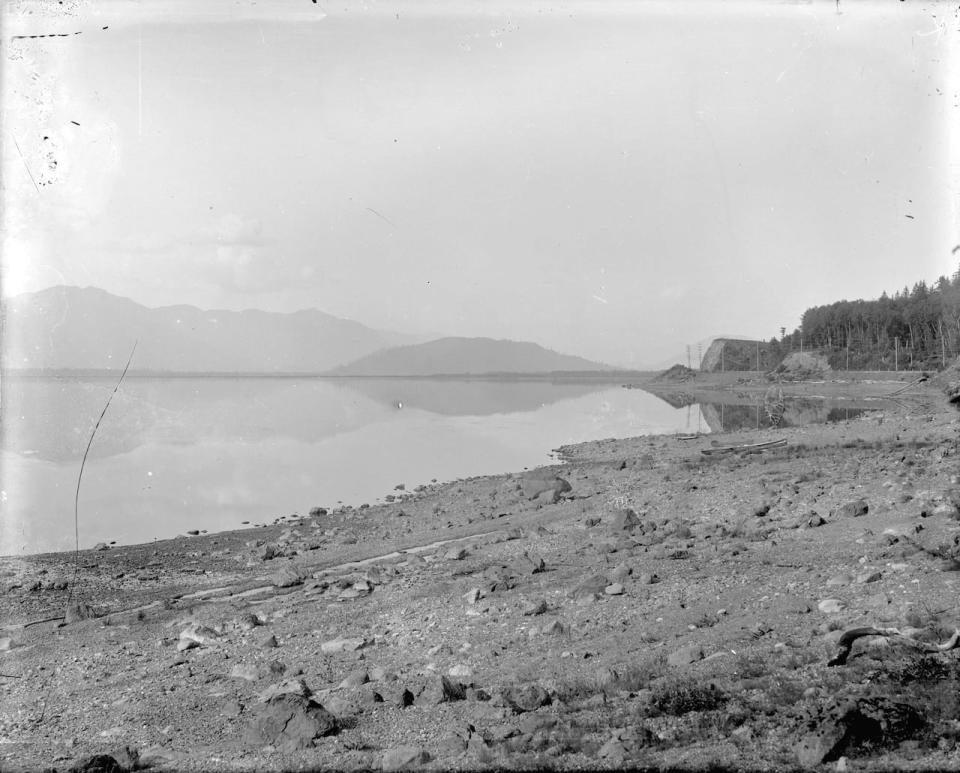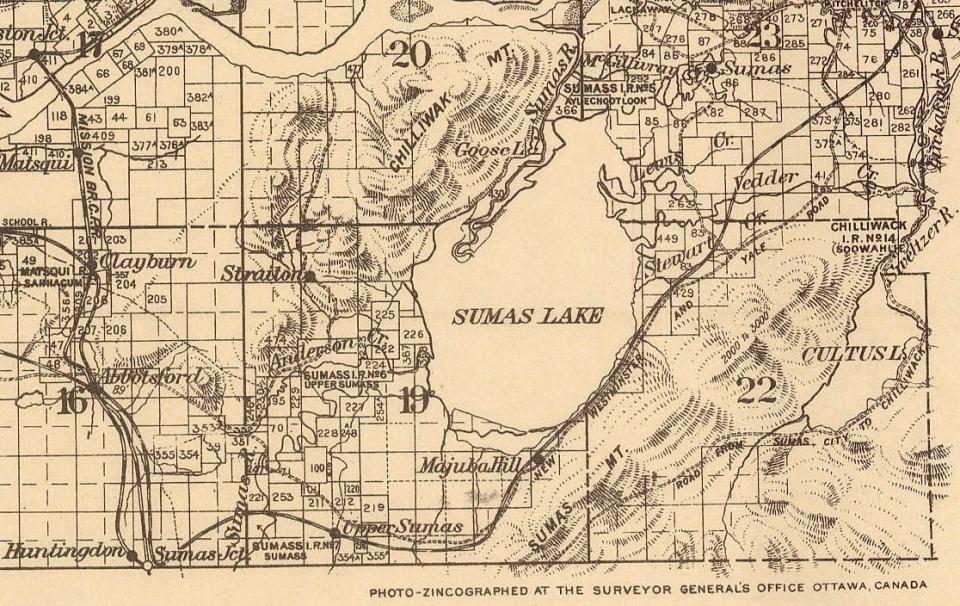B.C. politicians debate reflooding Sumas Prairie

A new report by a team of UBC scientists has B.C. politicians and First Nations weighing in after it proposed relocating some residents and farms in Abbotsford, B.C.'s Sumas Prairie, to allow the area to be turned back into a lake.
The report's lead author says that a "managed retreat" is necessary because climate modelling shows the area will continue to experience further catastrophic flooding, akin to the devastation the Fraser Valley experienced in 2021.
"The lake wants to come back, so bringing the lake back is fairly simple," Tara Martin told CBC Radio's The Current.
"The harder thing is moving infrastructure and people out of the way," she said.

Sumas Lake before the reclamation of the area. (City of Vancouver Archives)
Much of the Sumas Prairie was once a shallow, freshwater lake until the B.C. government drained it in the 1920s, converting it into agricultural land for settlers and displacing the Sumas First Nation.
Martin, with UBC's Department of Forest and Conservation Sciences, says with further flooding on the horizon, it makes better economic sense to reflood the plain rather than rebuild dykes to manage water flows.
The report says buying back the estimated 1,375 properties on the lakebed is a solution that is projected to cost around $1 billion, less than half of the estimated $2.4 billion cost of repairing dykes and installing a new pump station.
"I think long term, this is probably the most cost-effective, this managed retreat," B.C. Conservative Party president Aisha Estey told CBC's Stephen Quinn on Monday.
"The insurance implications of fighting ongoing flooding would be astronomical, so we definitely need to start making some different decisions there and pulling buildings back and getting buildings out of the way of destruction," she said.
On Friday, B.C. Premier David Eby said he was "flabbergasted" by the suggestion to turn the prairie back into a lake.
"I think it's a very bad decision. It will impact food prices for British Columbians. It will hurt farmers with dramatically higher costs, and they won't be able to farm anymore if it's underwater, obviously," Eby said.
Abbotsford, B.C., dairy farmer Rudi Meire says he can't imagine selling his home and business in an effort to reclaim Sumas Lake.
"It would be devastating to the Fraser Valley … moving one of the largest producing agricultural regions not only in B.C. but in Canada," he said. "We have to grow. We all have sons and daughters who also like to dairy farm."

Details of a 1913 surveyor general's map 77 from the City of Vancouver Archives show the location of Sumas Lake, which was later drained to become the Sumas Prairie. ( City of Vancouver Archives, Map 77)
During the 2021 floods, Sumas First Nation Chief Dalton Silver told CBC News that the First Nation had had several villages along the lake, with up to 10,000 people living in that part of the valley before European contact.
He said about 85 per cent of their diet came from the lake, including salmon and freshwater mussels.
"The idea of removing people from their homes is one of the furthest things from my mind. That is what happened to us in the past, so we would not wish that on anyone, " Chief Silver told CBC Radio's The Current on Friday.
Martin says that 100 years ago, the lake supported five salmon species and was a breeding ground for sturgeon and migratory birds.
"It will return," she said. "The question is not if but when it will return."


